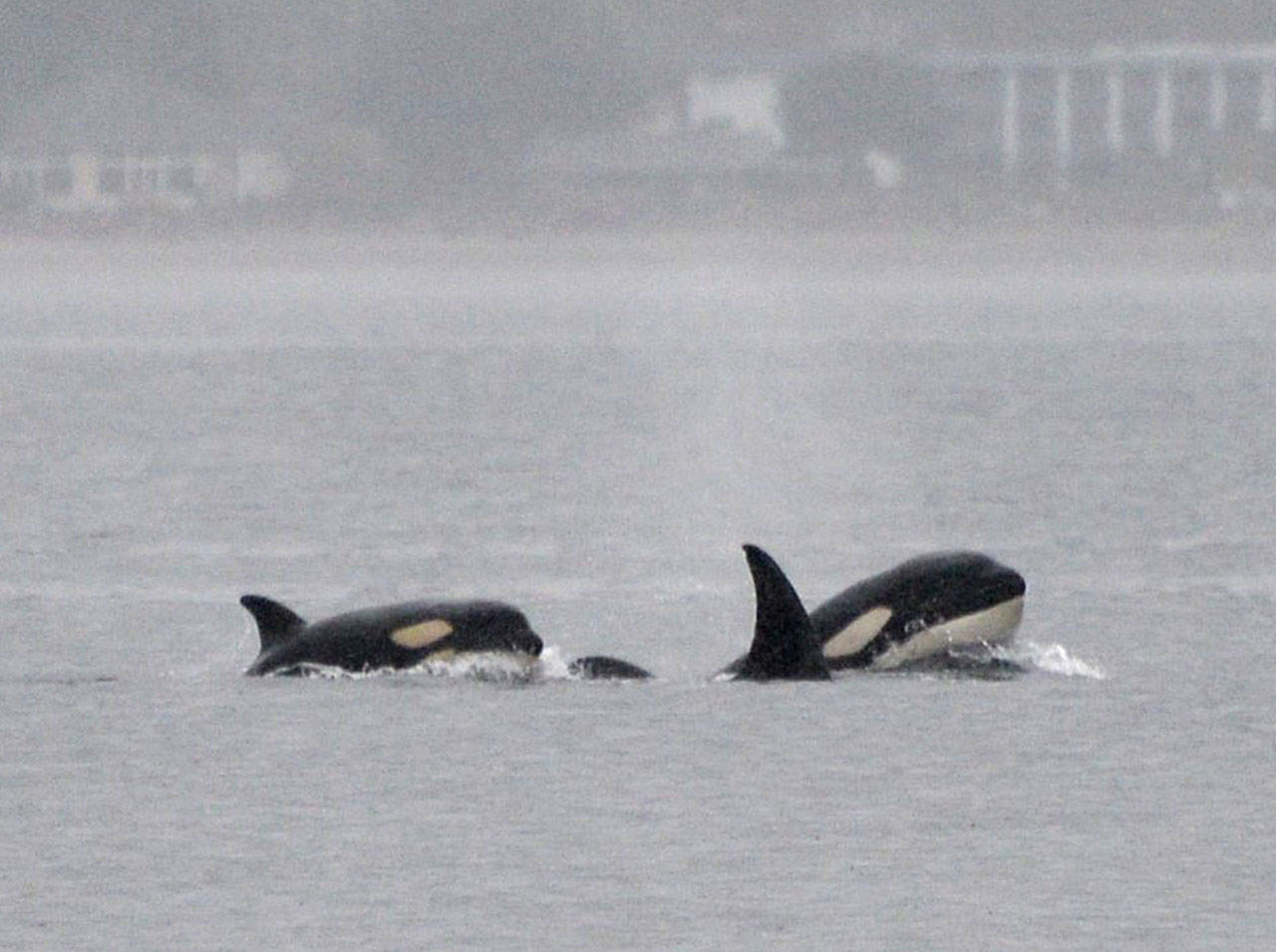March may “go out like a lamb” in some places, but Vashon’s transition from winter to spring occurred in the most “Northwest” of fashions — with an unprecedented number of transient orcas cruising the waters of Colvos Passage as March faded, and an almost equal number returning 10 days later to welcome April.
On March 26, over the course of a day, three groups of transients — nine families in all — totaling at least 40 and including three new babies, made their way up from south sound waters and into Colvos Passage.
“There were 23 whales in the evening group,” said Ann “Orca Annie” Stateler, Vashon’s resident whale and marine mammal expert.
“It was a real eye popper, the visual was amazing, seeing that many whales stream by.”
Notable individuals in the groups were the three 2019 babies and T46, a matriarch thought to have been born in the early 1960s and who was present during the last Budd Inlet live capture event in 1976.
“It’s amazing that she even comes back down here at all,” Stateler said. “But the 46s started coming back down this way about three years ago. She’s a real survivor.”
Stateler, with ID confirmation from local whale researcher Mark Sears, noted that all of the transient groups (the term “pod” is reserved for residents only) have visited the waters around the island before.
“The transients were not regular visitors to these waters until about 15 years ago,” Stateler added.
“Maybe it’s more that we’re better at observing and recording now. But food is the reason they’re down here.”
Or is it?
Just before press time, Stateler reported that on April 5, another 30 to 32 transient orcas, six families in all, were in the water in Dalco Pass and off Point Defiance. She noted that the group looked like a “floating nursery school, with so many little ones in the mix.” Sears confirmed that all three new transient babies were present in the April 5 swim-by as well.
“This fascinates me,” she said. “I believe something in addition to abundant prey draws large transient gatherings to lower Puget Sound. Perhaps something culturally or socially relevant to transient killer whales. Are the mothers familiarizing their newborns with the territory?”
Transient orcas are strictly mammal-eaters, unlike the endangered southern residents, who only eat salmon, and the waters of the Salish Sea are abundant with the harbor seals, porpoise, sea lions and even other whales that keep these families fed.
As for those southern residents, in the same week that the transients gathered here en masse, L Pod made a newsworthy appearance of its own — in California.
Every member, including L25, Ocean Sun — now the oldest southern resident, thought to be in her 90s — and L124, the newest southern resident born three months ago, showed up in Monterey Bay on March 31, in a rare appearance that made headlines up and down the coast.
In a story reported by Lynda Mapes for the Seattle Times, Nancy Black, a marine biologist and owner of Monterey Bay Whale Watch, said that southern resident killer whales have only been observed in Monterey Bay a total of five times over the past two decades.
“They will go where the fish are,” the Center for Whale Research’s Ken Balcomb said.
Mapes reported that the good news was that all members of the pod looked healthy, including the baby, although its sex is still unknown.
“I was so glad to hear that baby L124 looks healthy,” Stateler said. “No one had seen it for almost three months. I have been keeping a special bottle of wine in my fridge to celebrate a successful southern resident birth. Hopefully I’ll be able to have a glass soon.”



